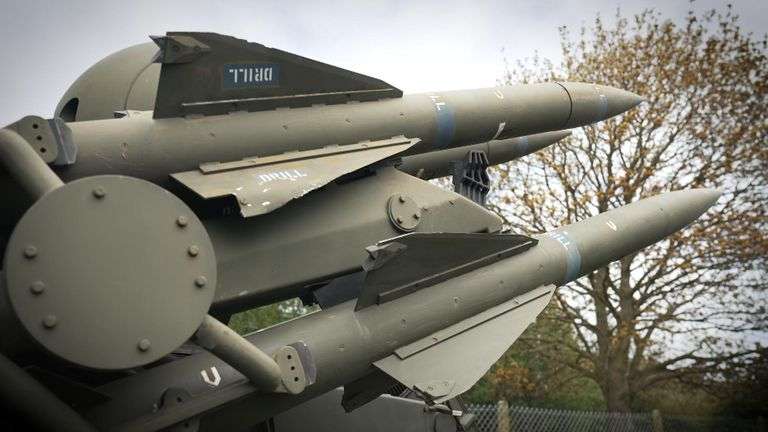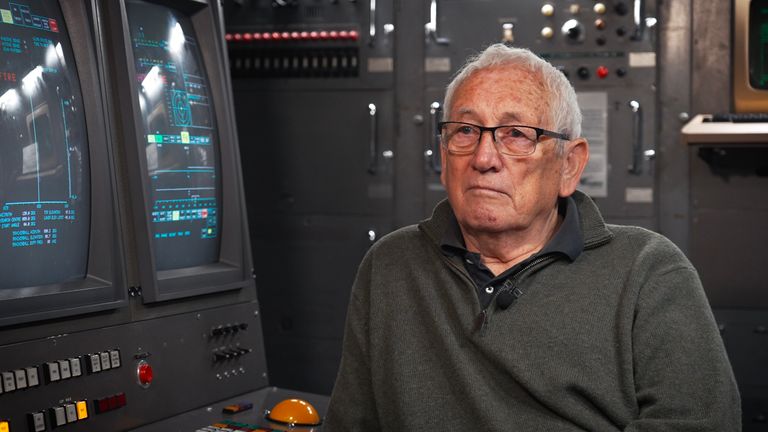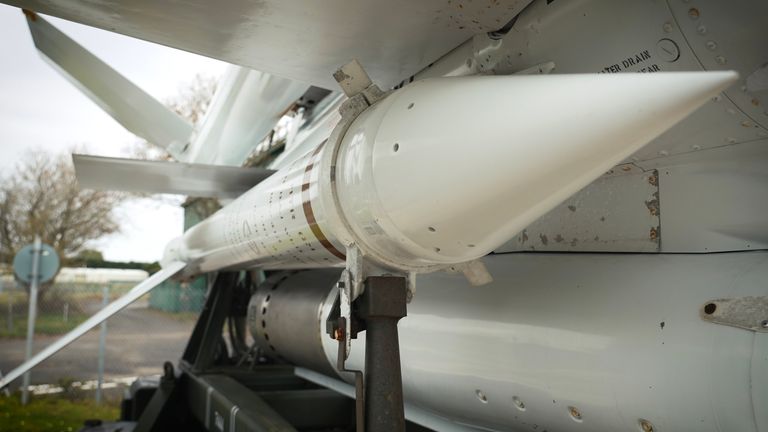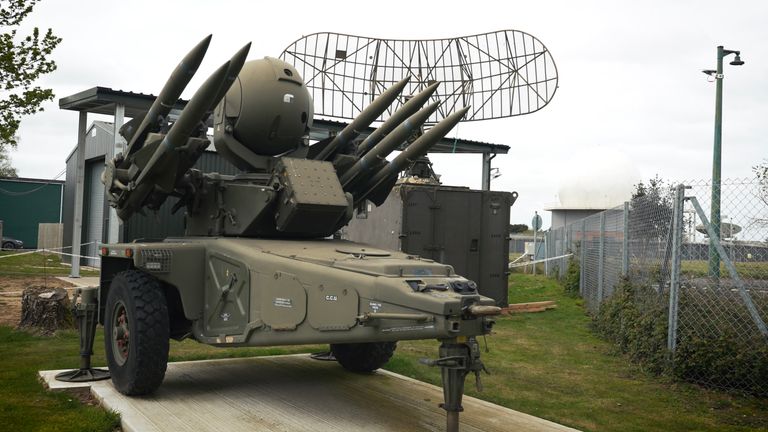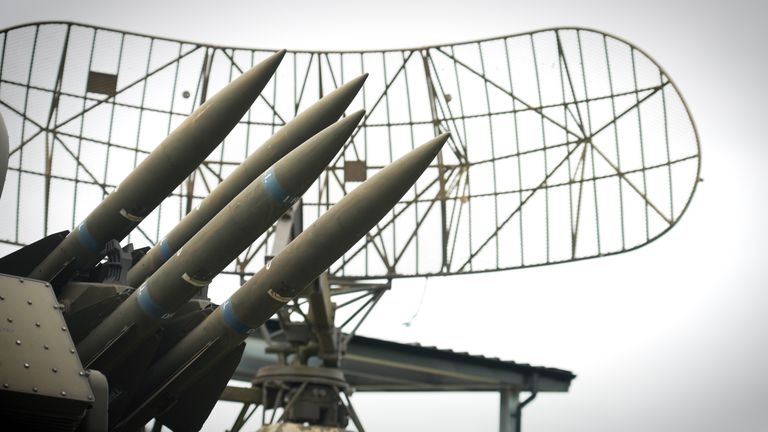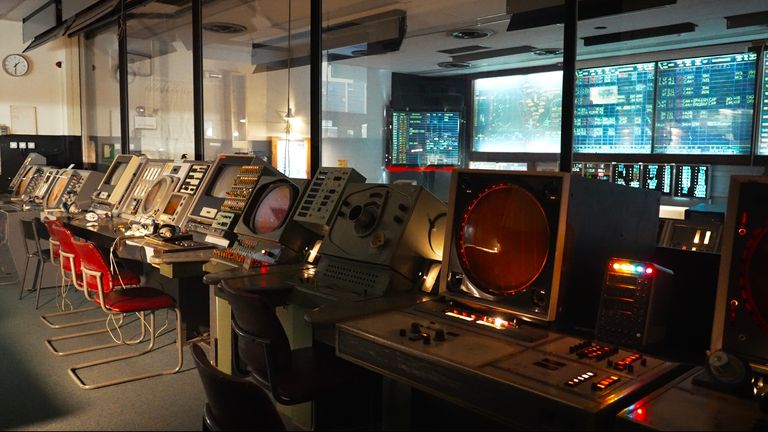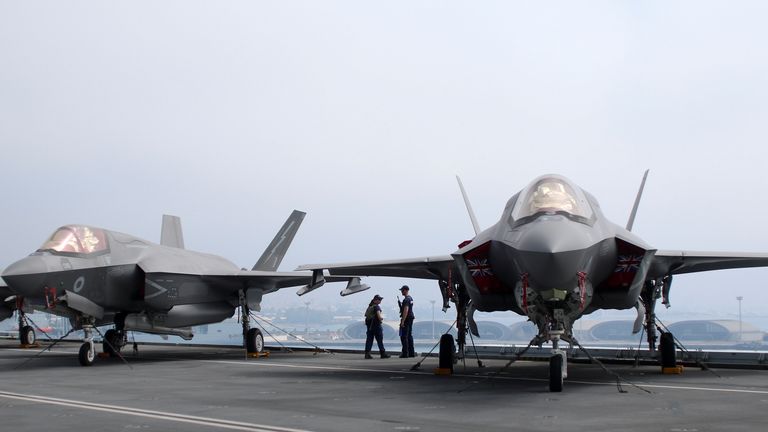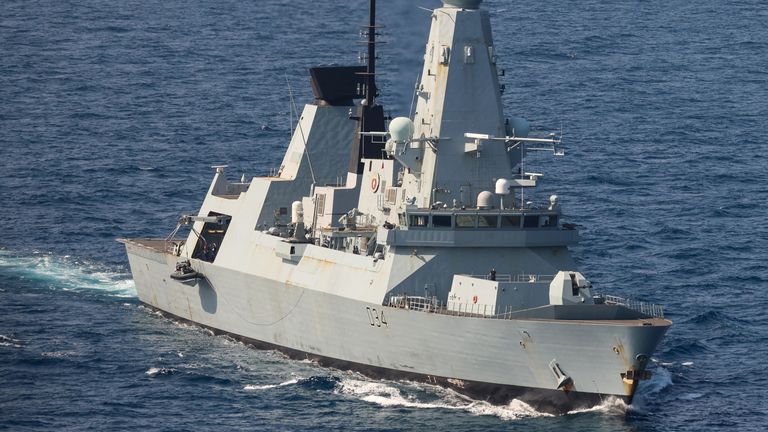Unprotected Skies: The Impact of Budget Constraints on the UK’s Defenses Against Missile and Drone Threats
UK ‘increasingly vulnerable’ to threat of missile and drone attacks after decades of cuts.The UK has highly capable air defense equipment. However, there are not enough of these assets to protect the vast array of critical infrastructure in the country. Additionally, there are insufficient assets to defend troops deployed on operations overseas.The Impact of Budget Constraints on the UK’s Defenses Against Missile and Drone Threats
Military experts maintain that the United Kingdom’s once-impressive air defense is being threatened. Cold War veterans have stated that the erosion is a result of decades of cost-saving cuts. The UK is now more vulnerable to the threat of missiles and drones because of this erosion.
Critical national infrastructure, such as power stations, military bases, and government buildings. Britain’s capability to safeguard its essential assets. From the kind of Russian cruise missiles that are striking Ukraine, These missile strikes are devastating.
But any credible “integrated air and missile defence” plan will cost billions of pounds and would likely require. The prime minister recently announced a proposed rise in defense spending. This would amount to a certain number, 2.5%, of the national income. According to defence insiders, there are deliberations underway to raise defence spending above the proposed level.
“Can the UK defend its cities from the skies if there is a barrage of missiles? No,” a senior defence source said, speaking on condition of anonymity.
“Does the public know what to do in the event of an air attack? No.In plain terms, are we secure?? No.”
As part of a series called Prepared for War? News visited air defense sites that once played a key role in protecting Britain during the Cold War. They spoke to veterans who were part of the force. These veterans had been on alert to respond to any Soviet air threat.
Pressing the big red button
Inside a cabin at an old military-base-turned-museum in Norfolk, a former Royal Air Force technician flicked a line of switches. He primed a simulated batch of missiles with the switches. As he worked, he watched a screen. A radar scan searched for enemy aircraft.
“It’s picked up a target,” says Robert Findlater, pointing at a dot on the monitor, which looks more like a retro computer game.
A beeping noise indicates the signal from the radar is becoming stronger as the hostile aircraft approaches.
When in range, the message on one screen changed. The message “hold fire” switched to “free to fire” on another screen, written in green.
Mr Findlater leans forward and presses a big red button.
Suddenly, there is a roar as the simulated noise of a missile blasting off shakes the cabin.
The Impact of Budget Constraints on the UK’s Defenses Against Missile and Drone Threats
The Bloodhound air defence missile
The Bloodhound air defence missile, powered with a Rolls-Royce engine, could reach 60 miles per hour in a tenth of a second before rocketing up to twice the speed of sound as it powered towards an enemy aircraft or missile—state-of-the-art technology in its day.
“We’ve been successful in our launch,” the RAF veteran says, with a smile.
He then peers back at the screen, watching a line of what looks like radio waves jumping up and down, until there is a spike to indicate the missile closing in on the target.
“It [the radar] is now looking for the missile, and there she is in the beam. next thing you see, that’s the warhead.
“It’s gone off, and you killed it,” the veteran says, finishing the simulation.
Long retired, Mr Findlater joined the RAF in 1968.
He rose up through the ranks to become chief technician on a Bloodhound unit, charged with ensuring the missiles were ready and able at all times to fire at any threat.The Impact of Budget Constraints on the UK’s Defenses Against Missile and Drone Threats
Stepping outside the cabin
Moving from the control room of the cabin to a grassy area, the veteran gave a tour of the weapon itself.The array of rockets and warheads was threatening in appearance, with the orientation now being horizontal rather than vertical.
Mr. Findlater laughed when asked what message the design was trying to convey.To NATO’s former Warsaw Pact foes. He replied, “Don’t come knocking. We’re ready for you.”
Ground-based systems, located around the UK’s coastlines, were once part of a layered grid for Cold War air defenses. This grid included fighter jets and other weapons.
But the Soviet Union collapsed.After this event, the entire arsenal of Bloodhound air defense missiles was taken out of service. Air bases were reduced to save money. Fast jet squadrons were also reduced to save money. The decrease happened as a result of what has been called a “peace dividend” taken by succeeding prime leaders.
At that time, there were discussions about investing in US-made Patriot air defense systems. This system is a core part of the United States’ air defenses and is capable of operation. It has found usage among various NATO countries.
Mr. Findlater said, “I think the government gave up because the threat was no longer present.” “Therefore, they shut everything down,” he added.
When asked if he believed that the UK was currently well-defended, he responded, “No, not at all.Our defense appears inadequate to me.
As for how that made him feel, he said: “Sad. Considering what we had in the 1970s and 1980s,”
Frozen in time
The RAF Air Defense Radar Museum also has a relic from the Cold War era: an operations room with enormous boards along one wall that show how many fighter planes were available for a last-minute scramble.
Desks come with radar screens that are lined up in rows and buttons that look significant.
John Baker, 69, once worked in this hub as an aircraft identification and recognition officer.
When asked if, during his service, the UK’s air defenses had been ready for combat, he said, “We practiced. There were exercises for war.
“Every couple of months or so there would be a small exercise and once or twice a year there would be a major NATO exercise in which this, because this radar site was closest to Europe, would be the epicentre.”
While cautioning that he was no longer up-to-date on the military’s air defence capabilities, he sounded less certain about whether they could handle a major attack today.
“If hundreds and hundreds of drones and cruise missiles were to come in,. I don’t think we could safely take out all of them,” Mr Baker said.
He added: “I’m glad I did my time back then—and not now.”
Air defenses are ‘woefully inadequate’
The UK does have highly capable air defence equipment, just not enough of it to be able to protect the vast array of critical infrastructure across the country and also to defend troops deployed on operations overseas.
Making the situation more grave is a growth in the quality and quantity of missiles and drones that hostile states such as Russia, China, Iran, and North Korea have developed.
At present, the RAF has just nine frontline fast jet squadrons, including the quick reaction alert aircraft that are at the sharp end of defending against any air threat.
While modern jets—the F-35 and Typhoon—are far more sophisticated than their predecessors, the UK had 30 frontline squadrons towards the end of the Cold War.
The only ballistic missile defense systems in the nation are installed on the six Type 45 destroyers of the Royal Navy. A naval representative asserts that out of the mentioned vessels, merely three are presently ready for military engagements, with one currently active in the Middle East.
On land, the military has around six Sky Sabre ground-based air defence systems, each of which is able to shoot down multiple missiles.
However, these weapons only have a very limited range in the UK, and at least two of them—if not more—are stationed abroad.
Read more:
Political Promises More of the Same
Labour stands firm on nationalizing railways despite Tory skepticism over funding
The Potential Benefits of Artificial Intelligence for Democracy
Jack Watling, a senior research fellow at the Royal United Services Institute, called the UK’s current array of air defences “woefully inadequate.”.
Britain does benefit from its geography, with a lot of European NATO countries between its shores and Russia.
But since the fall of the Soviet Union, many European countries have similarly scaled back their air defenses in an effort to save money.
“We always hear this argument from the Ministry of Defense that gaps in our own capability are acceptable because we’re part of an alliance,” Mr. Watling said.
“It’s a little bit like if you were going round to a ‘bring your own booze’ party and you said, ‘Well, there’s other people coming, so I’m not going to bring any alcohol’.
“If everyone adopts that approach, then there is simply nothing to drink. And when we look across NATO, there is an overall shortage [in air defences].”
“The UK is ready for any circumstance, and our defense will be coordinated with our NATO partners,” a spokesman for the Ministry of Defence affirmed.
“As part of our commitment to invest an extra £75bn for defence over the next six years, we continue to review potential opportunities to develop our capabilities and modernise air defence across Europe in close discussion with allies and partners.”
The Impact of Budget Constraints on the UK’s Defenses Against Missile and Drone Threats

